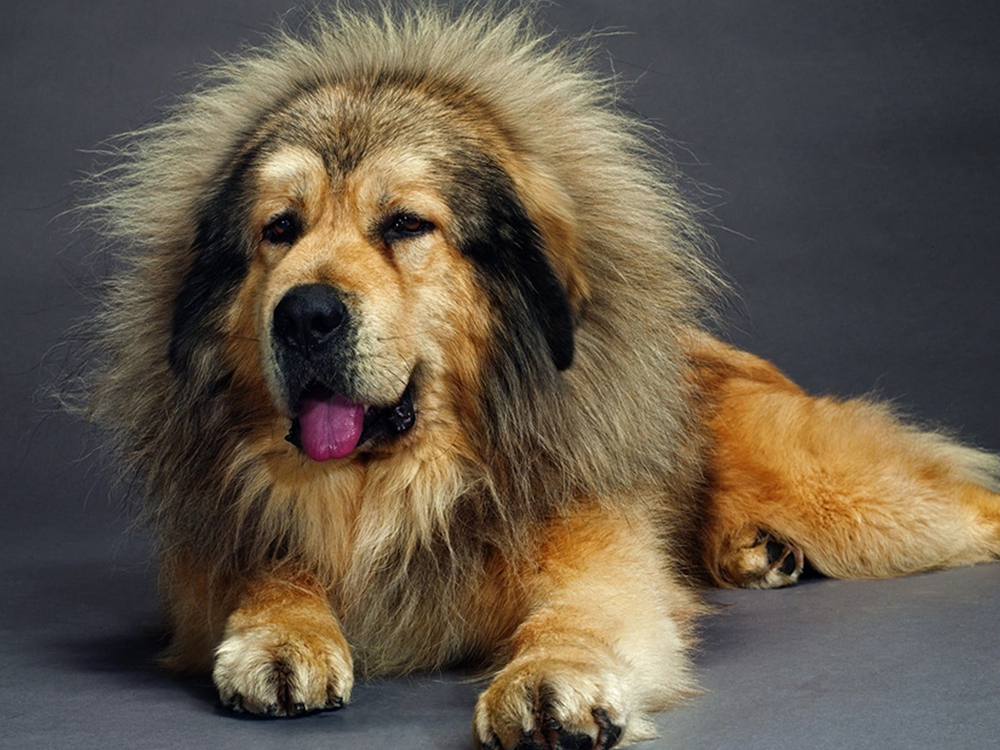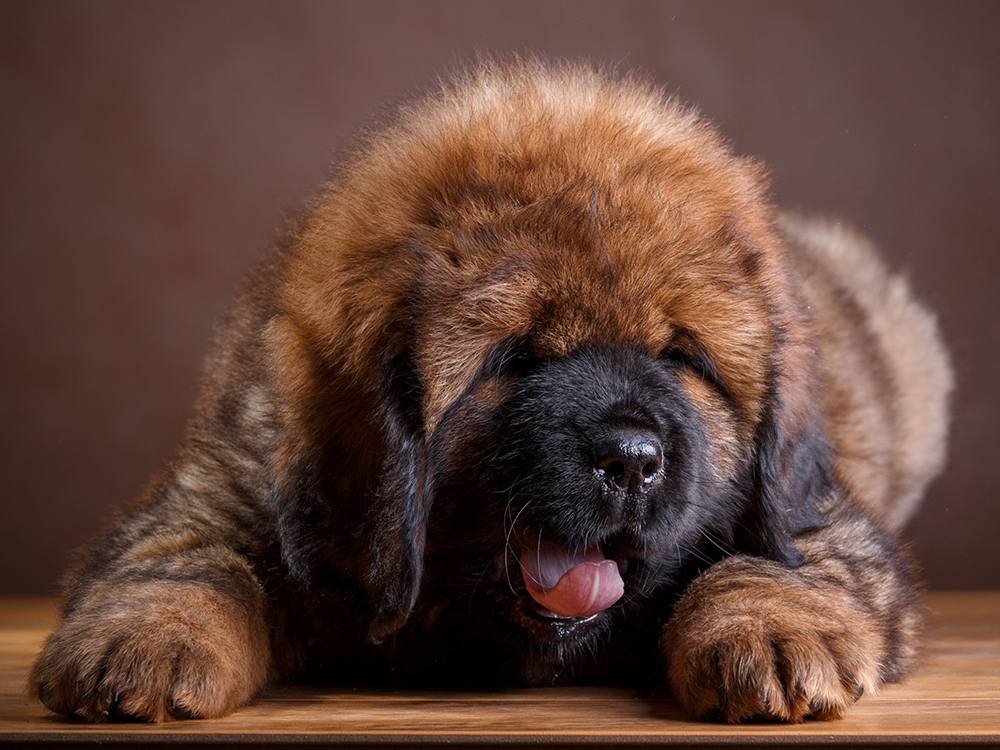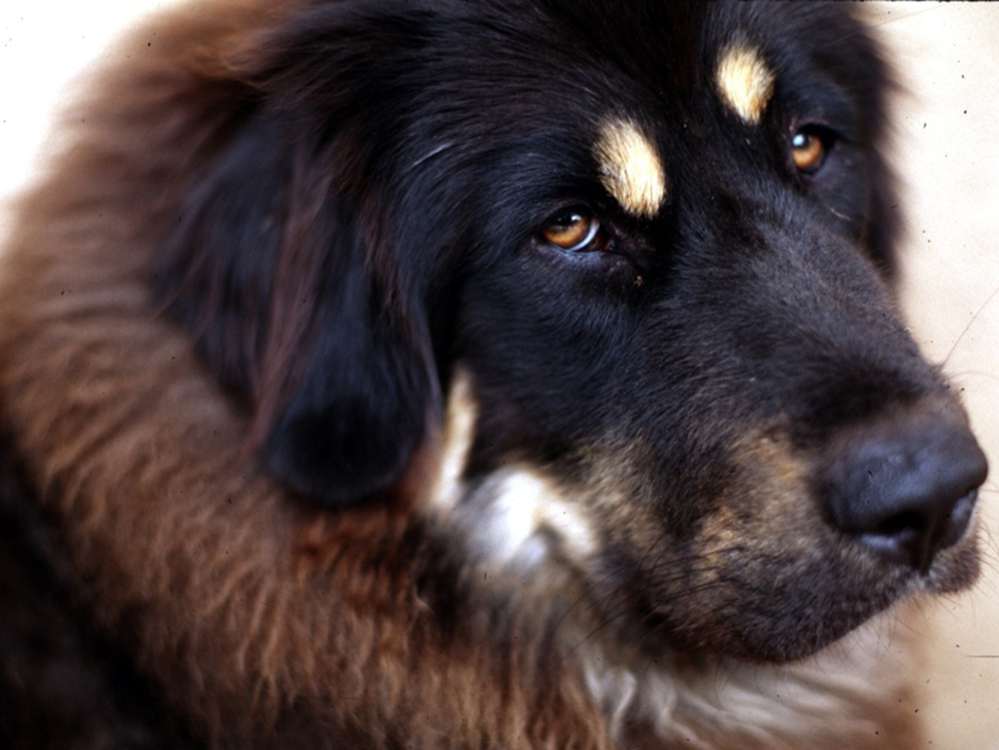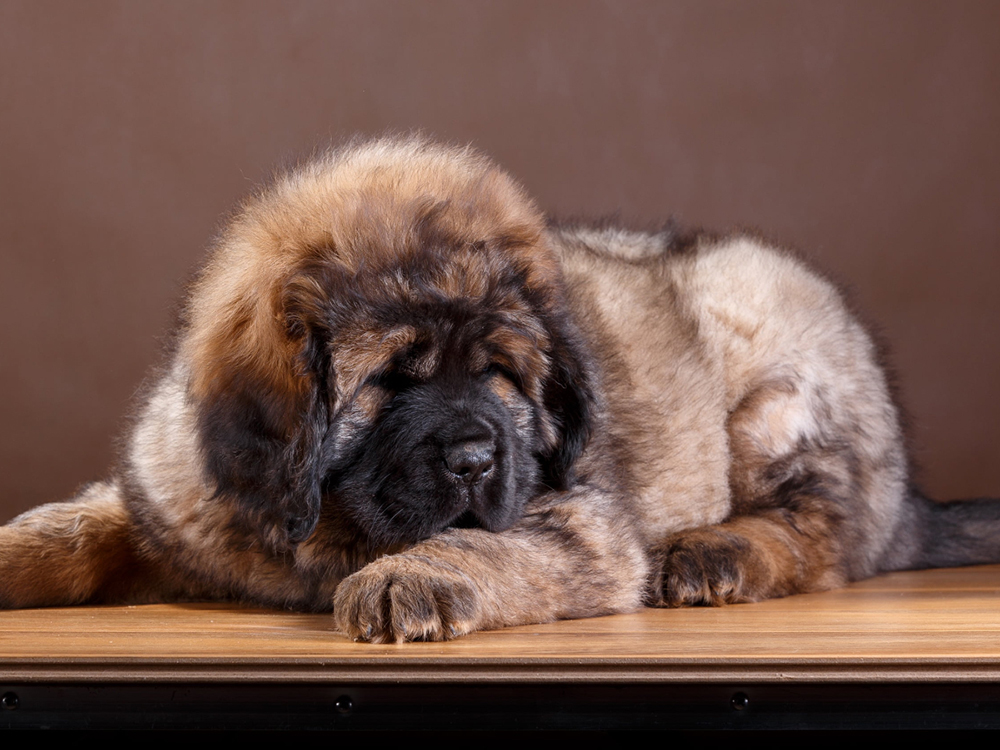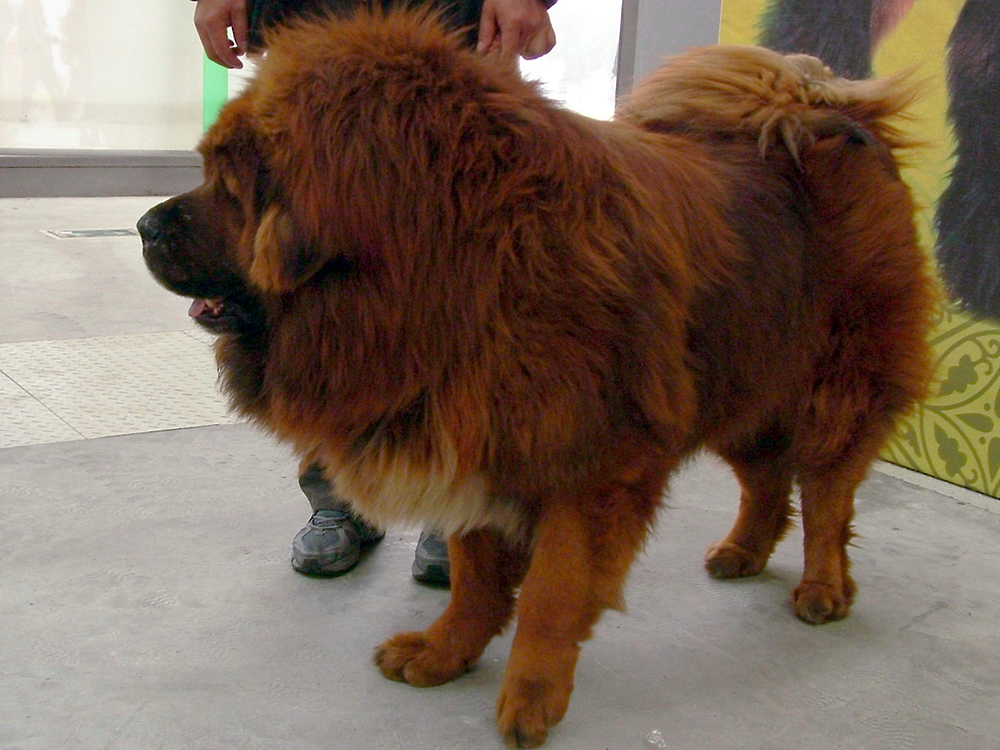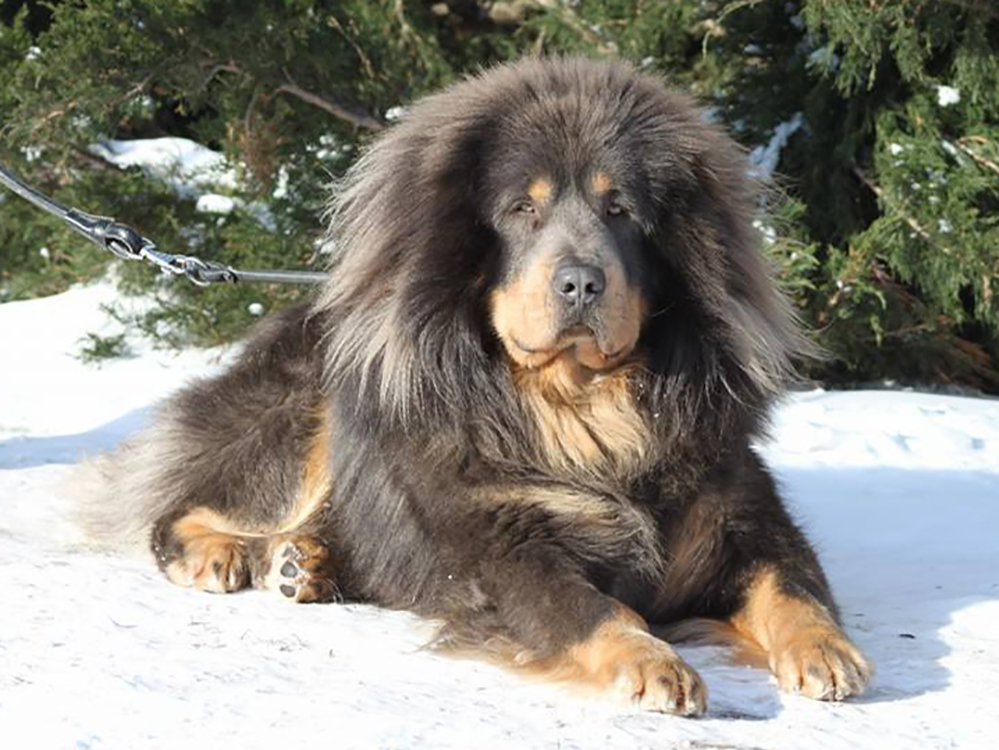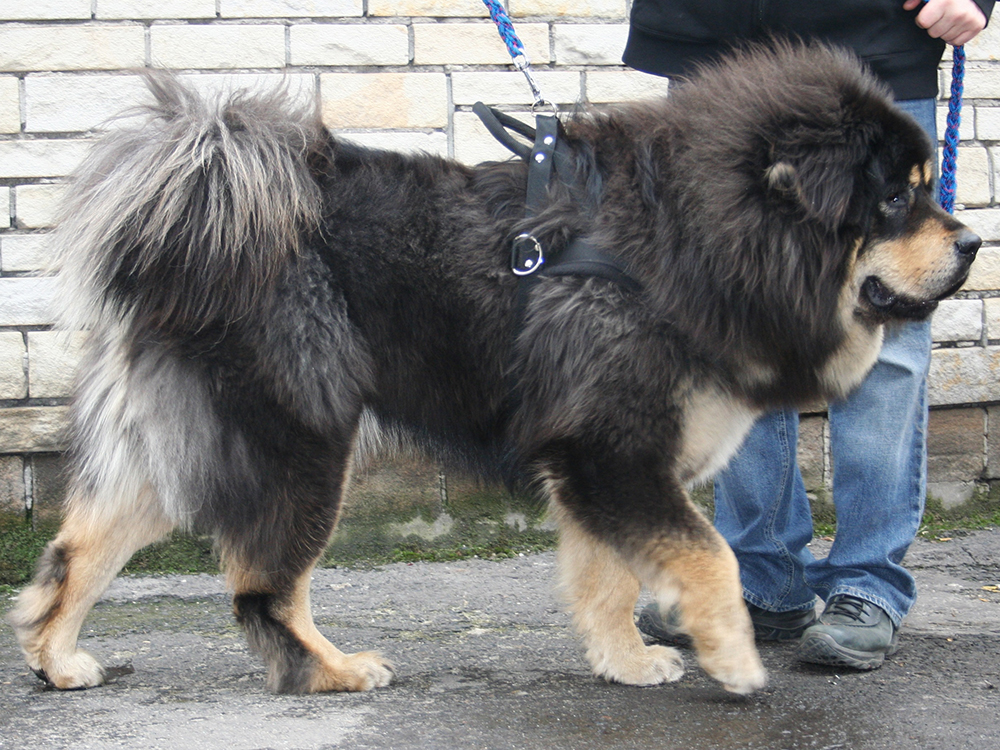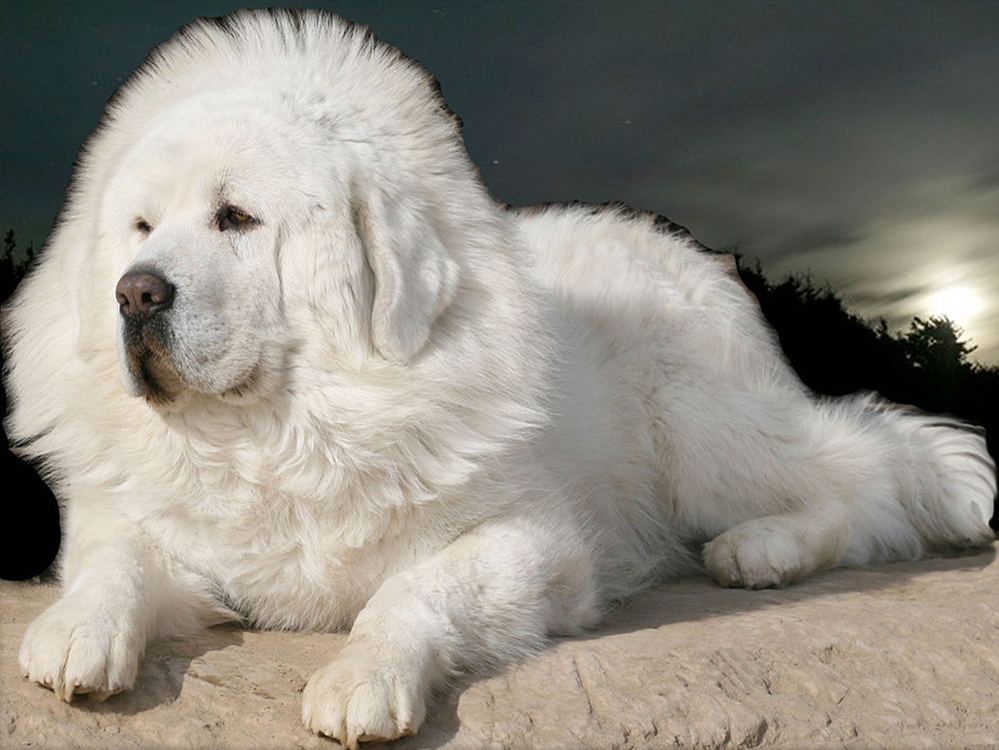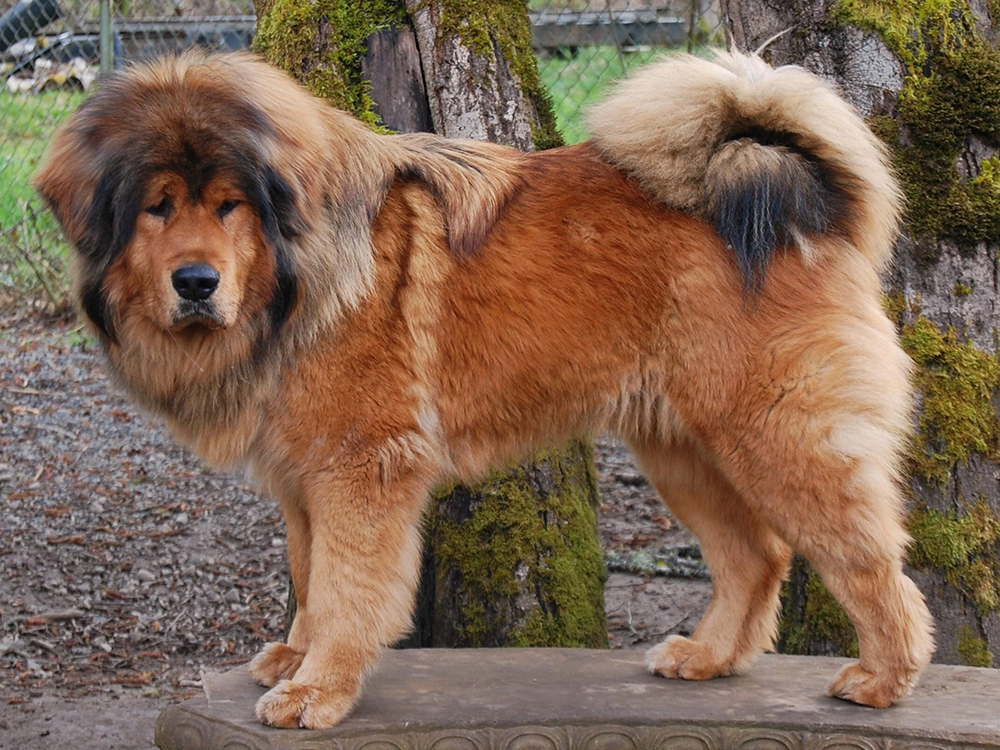
- Tibetan mastiff is a part of the Tibetans’ belief. It is said that these massive dogs contain the souls of nuns and monks who were not reincarnated as people or sent into Shambala (heaven).
- The Tibetan mastiff is one of the world’s most expensive dogs. In 2014, a Chinese millionaire bought a Tibetan mastiff costing him around £ 1.3 million.
- Aristotle and Marco Polo have met the Tibetan mastiff during their excursion in Asia. Marco Polo described them as ‘tall as a donkey with a voice as powerful as that of a lion.
Tibetan Mastiff Breed Pictures
Vital Breed Stats
| Height: | 10 - 12 cm M | 9 - 11 cm F |
| Weight: | 220 - 353 kg M | 165 - 276 kg F |
| Breed Group: | Utility Dog Group |
| Life Expectancy: | 13 - 15 years |
| KC Registered: | No |
Breed Characteristics
| Size: |  |
| Grooming: |  |
| Exercise Level: |  |
| Trainability: |  |
| Barking Level: |  |
| Good with Children: |  |
| Good with other pets: |  |
| Affectionate: |  |
| Protective: |  |
| Cost to Keep: |  |
Give a thumbs up if you love the Tibetan Mastiff

0
More About the Breed
History
The Tibetan Mastiff is one of the ancient dog breeds in the world. The breed originated from Tibet. He is a descendant from Tibetan guard dogs that existed five thousand years ago. It is believed that the Tibetan mastiff was created as early as 1,100 BC.
Back in the day, Chinese villagers developed two types of guard dogs called Do-Khyi and Tsang-Khyi. The Do-Khyi served as flock guardians and travelled with nomadic shepherds. According to Chinese documents dating to 1,121 BCE, Do-Khyi means 'tied dog.' They were often leashed in the daytime but were given the freedom to prowl around at night.
Meanwhile, the Tsang Khyi, which means ‘dog from Tsang,’ was trained to be guard dogs in lamaseries to protect llamas and even monks. In 1800, a captain named Samuel Turner wrote in his memoir about the use of huge dogs in Tibet. Apart from the dogs’ size, he did not mention additional details about them.
In 1847, the Tibetan Mastiff was the first dog from Tibet to be imported to England. He served as a present from Lord Hordine, the Viceroy of India, to Queen Victoria. In 1873, the Kennel Club of England was established. It did not take long for the Tibetan Mastiff to be an officially registered breed.
A year later, the Prince of Wales, who later became King Edward VII, imported another two Tibetan Mastiffs, These dogs were displayed at the Alexandra Palace Show in 1875. In 1932, the very first Tibetan mastiff breed club was created. Unfortunately, breeding dogs became difficult when World War I struck. After many years, in 1976 to be exact, the importation of the Tibetan mastiff dog breed to England resumed again.
Appearance
The Tibetan Mastiff dog is large with a well-boned and muscled body. Note that Tsang-Khyi types tend to be taller, heavily boned, and wrinkly around the face. Do-Khyi types are leaner and less wrinkly than the Tsang-Khyi.
Despite the Tibetan Mastiff’s hugeness, he is still very agile. His body is somewhat longer than tall. He has a wide and strong head with noticeable wrinkles. His square-shaped muzzle is broad with a large black nose. It is common for a Tibetan mastiff’s upper lip to cover the lower lip. His teeth intersect in a level bite. He has medium, almond-shaped eyes that are deep-set and slanted. The breed’s eye colours may vary in shades of brown. He possesses V-shaped pendant ears that droop forward near to the head.
The Tibetan Mastiff’s neck is heavily muscled with several dewlaps. Males have more conspicuous dewlaps compared to females. The Tibetan mastiff has a bushy tail that is curled backwards. His cat-like feet have feathering between the toes. The breed owns a thick double coat. It has a long, dense, and rough topcoat and a heavy, downy, and fluffy undercoat. The Tibetan Mastiff has a heavy mane around the neck, shoulders, and tail. The male has a more prominent mane than the female. The Tibetan mastiff's coat should be straight and never curly or wavy.
The coat colours come in black, blue, brown, and gold. It may be with or without tan markings on the lower areas of the leg, the muzzle, the tip of the tail, and above and around eyes. There may be white markings too, but it should only appear on his chest and feet.
Grooming
The Tibetan Mastiff has a low-maintenance coat that sheds light. Weekly brushing is enough to get rid of dirt, mats, and tangles. Use a slicker brush to remove grit and debris on his coat. Then, brush his tail, mane, and breeches with a wide-toothed comb to clear away tangles.
The Tibetan Mastiff blows his undercoat when his seasonal shedding starts. This may occur around the end of spring or summer. It is best to use a de-shedding tool or undercoat rake when brushing him. Avoid trimming his coat as the breed is meant to be shown naturally. However, it is allowed to clip the furs on his feet to give it shape and a neat appearance to the hocks. A Tibetan Mastiff should only be bathed when he gets too smelly or dirty. Frequent washing can dry out his skin and coat, which can lead to skin problems.
Trim his nails at least once or twice a month. Since he has droopy ears, inspect and clean his ears weekly to prevent ear infections. If there are signs of redness or inflammation, be sure to consult the vet. Incorporate daily tooth brushing in his grooming routine. If this is not feasible, twice or thrice a week will suffice. Brushing his teeth is the most effective way to prevent periodontal disease, which is one of the most prevalent health issues in dogs.
Temperament
Being a guard dog for thousands of years, the Tibetan Mastiff is inherently loyal and protective of his family. He is deeply affectionate and gentle with them but aloof with strangers. If he senses a threat, he will turn into a fierce and courageous protector. Early socialisation is a must for the Tibetan Mastiff. This is to ensure that he has a good perception of whether the person is a threat or not. Lack of proper socialisation can lead him to become wary and aggressive to every person that passes his way. You don't want this to be a trait in any dog, especially in a giant Tibetan Mastiff dog.
Whilst the Tibetan Mastiff fits well in a family with children, he should be supervised when interacting with younger ones. His large build can easily topple small children if he gets too excited whilst playing. Moreover, he may mistake their games as fighting and end up getting protective over his children from other young ones. As an adult, it is also important that you teach children how to handle dogs gently such as not pulling their tail or fur. Young children should also understand the dangers of approaching a sleeping or eating dog.
A Tibetan mastiff goes well with cats and dogs if they are raised together. If not, he can still form a strong and friendly bond with them. However, it may take some time for this to happen. Just make sure that he is properly socialised and that you follow steps for proper introduction to make the process easier and less stressful for you and your pets. Note that the Tibetan mastiff may exhibit aggression towards same-sex dogs. Neutering both dogs can help lessen their aggressive tendencies.
Intelligence
The Tibetan Mastiff is an independent guard dog, so he is prone to being stubborn and doing things his way. Thus, training him can be very challenging. He needs a leader who is firm and consistent. Patience is a must, too, as he may disobey your command if he feels like his way of handling things is a better option.
The Tibetan Mastiff can be a very adamant dog. However, never use punishment methods as a way to urge him to listen to you. This will only backfire and lead him to become more stubborn. Instead, always stick with positive reinforcement. Give him praises and treats or let him have a fun dog activity when he does well in training. It will greatly motivate him to put in more effort during training.
Nutrition
Picking a dog food that best suits your Tibetan Mastiff can be tricky. However, you can narrow it down by choosing premium-quality dog food instead of commercial ones. Make sure that it also fits your dog’s life stage. This is to ensure that he will get the right amount of vitamins and nutrients for his age.
The basic nutrients every dog needs are protein, fats, carbohydrates, water, vitamins, and minerals. Since the Tibetan mastiff is not a highly active dog, his diet doesn't necessarily require big amounts of proteins and carbohydrates. However, he is a more primitive breed compared to other dog breeds. Thus, experts suggest that his diet should include raw or fresh food. This includes lean meats, fresh vegetables, eggs, fish, and fruits. Make sure that freshwater is available for your dog throughout the day. Lack of hydration can lead to dehydration and other fatal complications.
Feeding
A two-month-old Tibetan Mastiff puppy weighing 12 lbs. needs at least 0.5 cup of dog food per day. As he turns three months old with a weight of 20 lbs, feed him about 0.6 cups of food daily. When he reaches six months of age, 1 cup of food every day will suffice. Split his food into three meals per day to prevent overeating.
A nine-month-old Tibetan Mastiff puppy that weighs 75 lbs. requires 1.75 cups of food every day. Once he is a one-year-old dog weighing 95 lbs., he should have 2 cups of food daily. An adult Tibetan mastiff with a weight of 120 lbs. needs around 2 to 2.5 cups of food each day. If a full-grown Tibetan mastiff weighs about 140 lbs., providing him 2 to 3 cups of dog food a day is enough. The same amount of food goes for 160 lbs. Tibetan mastiff dog. His meals should be divided into two smaller servings per day to prevent stomach torsion, a prevalent problem found in the breed.
Health
- Elbow dysplasia
- Hip dysplasia
- Osteochondritis dissecans
- Autoimmune hypothyroidism
- Panosteitis
- Canine inherited demyelinating neuropathy
Exercise
Although the Tibetan Mastiff is a massive dog, he only requires minimal exercise. Thirty minutes to an hour of walking and other fun dog activities are sufficient enough to tire him out. Whilst walking him, it is best to avoid taking off his lead as he might become wary and aggressive with other dogs.
Make sure to change your every-day routes for walks to prevent him from becoming territorial of the areas. It is also worth noting that overexercising a Tibetan mastiff especially a puppy can damage his joints and muscles. Be sure to limit strenuous activities to avoid this from happening.
Cost of Ownership
Owning a healthy and well-bred pedigree Tibetan mastiff puppy will cost around £850 to over £1,000. Food expenses may range from £780–£888 yearly. Getting your dog all his necessities such as dog bed, crate, lead, and toys is approximately £200–£400.
Vet fees for check-ups cost about £30 per session. First-time vaccinations will cost you about £100, whilst each shot of yearly boosters is £50. Getting your Tibetan mastiff puppy insured may need you to pay £20–£30 monthly.
Tibetan Mastiff Breed Highlights
- The Tibetan Mastiff is a big dog with a huge love for his family.
- He is extremely loyal and protective of them that he may be guarded around strangers.
- He goes well with children and other pets provided that he has early training and socialisation.
- He only needs minimal grooming although more thorough brushing is needed during the shedding season.
- Practice firm and consistent training coupled with patience, gentleness, and positive reinforcement in training a Tibetan Mastiff.
- He only needs short amounts of time for exercise.






